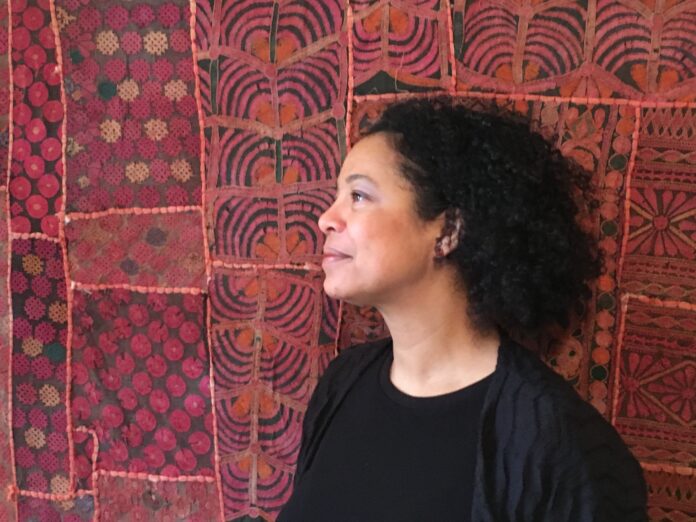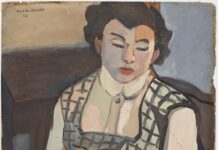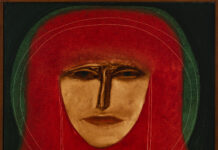Aauthor of books An African at the Louvre e The art of black worlds: History, theory, criticism, recently launched in Brazil by time bazaar, French historian Anne Lafont was in São Paulo in August, at the invitation of MAC USP, to teach a postgraduate course, sponsored by the Terra Foundation. On that occasion, Lafont gave us the following interview:
ARTE!✱ – Tell me a little about the impact of your book An African at the Louvre about the public, around the issue of representation of black people in art. Has there been any development of your studies by other researchers? Reflections on institutions, mainly in France, or perhaps in other European countries? Have they rethought the way they formulate their curatorial practices for their collections?
ANNE LAFONT – We started from a somewhat simple idea of the representation of black people in the visual arts, mainly in Europe and France, and ended up reflecting on the visual means of the concept of race, how race materializes visually. I would say that the show Le modèle noir from Géricault to Matisse, which took place at the Louvre [and was the starting point for An African at the Louvre], it was a very important moment in the history of exhibitions in France, a major exhibition on a subject that had not been treated on this scale in France.
There were many visitors, I believe more than 400 thousand, and this also transformed the way museums in France began to work on these issues related to the communities that make up French society. There was really a ripple effect at the end.
In the academic world, I must say that there are two phases of reception of my work. It is historians who were initially interested in my work, but historians in France were more reluctant to this type of post-colonial approach. However, younger generations are beginning to emerge who are much more interested in these subjects. In the world of museum curators, it took a little longer. It was first of all historians and anthropologists who were really interested in my work, and that's why I was hired by the École des Hautes Études en Sciences Sociales in Paris, an institute for advanced studies with researchers who are anthropologists, philosophers, sociologists, historians, of art. Things are starting to change, but it is a somewhat longer process.
It was with, I would say, the transformation of the representation of black people from a painting subject to a model, that in the XNUMXth century some more female models were represented. But throughout the XNUMXth and XNUMXth centuries, there were essentially young men in positions of service. In the XNUMXth century, we have the arrival of a series of black female models who will actually appear more in French art. I think that black women were more present in the French colonies, where there was not as well-established an artistic milieu as in mainland France. Painters worked more in Paris than in the colonies, and therefore only in the XNUMXth century, when black communities became more settled in metropolitan France, were more women present and represented.
ARTE!✱ – To what extent are there similarities and differences between the representation of black people in French art in relation to its colonies and the general European representation of enslaved people in Brazil, for example?
ANNE LAFONT – For me, they are images that circulate in the Atlantic space and, in the XNUMXth century, around Debret and the French Mission in Brazil, we have images that are reinvested in French visual culture. They are artists who live in Brazil and who, therefore, describe what they see when they return to France. What is perhaps fundamental in the European experiences of Brazil is access to a form of cruelty from the Brazilian colonial environment, or from any other place that is not imaginable in Europe when we are far from the colonial experience itself. An access to something much more raw and direct about the experience of slavery, than when we just stay in something that is metropolitan, which is distant in relation to slavery. I think that Rugendas, Debret or others once again provide, through lithography, engraving, etc., completely direct access to the experiences of black people enslaved in Brazil.
ARTE!✱ – A question that offers another type of historical perspective: is it possible to compare today's decolonial debate with the black civil rights movements of the 1960s to 1980s? Why or why not?
ANNE LAFONT – This would require a very, very in-depth comparative study, but what is certain is that precisely the critical space generated by research like the one I am carrying out, as well as that of post-colonial interest, is not foreign to what society itself demands. It explains a history that has been too monolithic, that is, the very fact that civil society, so to speak, demands greater social justice is not unrelated to the development of critical thinking that provides the means to understand precisely the roots of this form of inequality, and that it existed, so I don't believe that researchers are unaware of the social and political movements of their time.
In this sense, as in the 1960s in the United States, as in France today, the fact that society is once again demanding social justice and a better distribution of things, this is not out of step with the type of project that I have been carrying out, in which we try to understand history in the long term, more precisely French history in connection particularly with the black community. In this sense, it is comparable to the period of the struggle for civil rights, that is, researchers are citizens and are not out of step with the movement that citizens manifest in society. It gained strength in universities and even for a time in newspaper editorial offices, as well as in sectors of society, through culture, among other agents.
ARTE!✱ – In recent years, critical racial theory has gained strength in universities and even reached the editorial offices of newspapers such as The New York Times, as well as sectors of society, through so-called culture. Among other authors, James Baldwyn and Frantz Fanon resurfaced. Achille M'bembe raised the issue of necropolitics. Structural racism has entered the agenda of progressive governments and even companies, which sometimes seem to engage in black washing – in reference to greenwashing, false sustainability for marketing purposes. This myriad of reflections, perspectives, propositions, etc. contributes to the debate on decoloniality, or can it sometimes create noise, dissonance, deviations or distractions?
ANNE LAFONT – The debate tries to make noise, provoke dissonance and distinction. The debate itself has this effect, that is, we cannot have an in-depth discussion without taking very different positions. It is inevitable and, in this sense, it does not mean that each individual who participates in the debate causes noise. But it is part of the debate, that is, we cannot raise a new question, put new ideas on the agenda without it making noise, disrupting the established order, necessarily disturbing the way of thinking. There are all kinds of positions that feed this debate and, personally, individually, we can choose a very personal and precise line, but it is part of a much more heated debate, and I don't see how a society transforms itself without making noise, that's not possible.
ARTE!✱ – We know that the most pernicious and covert identitarianism in the world is white identitarianism, which in the United States is currently manifesting its terrorist face with white supremacists. At the same time, we know that there is also a certain cacophony in the black identity struggle, involving, for example, distorted views of colorism, as well as the creation of what, for white society, are reservations, media characters who, due to their recurrence in face-to-face forums or virtual, consolidate themselves as exceptional figures among black people. This happens among actresses, actors, singers, writers and we even had a Supreme Court minister in Brazil. They achieve notoriety, often to the detriment of the community, their peers, and for their own benefit. Does this segmentation or dispersion of thought and action negatively affect the decolonial debate?
ANNE LAFONT – No, in fact there is plural black thought, and that is very good. There are very different positions from one individual to another in the same society, but even more so on a global scale, from the experiences of black women in Paris, to those in Benin. Black thought is very complex and very diverse. It is necessary to listen to people who have something to contribute, but it is an added value. It's not a lack of depth or efficiency, it's a richness that is ultimately a plurality of points of view, and there are points of view that I don't agree with. There are people who don't agree with me, and that's a very good thing for them. Finally, there is no monolithic black thought, there are diverse experiences, there are diverse points of view, there is multiple critical thinking, and that is a very good thing.
ARTE!✱ – Around the world, there has been great visibility for black artists who address historical and contemporary problems of blackness, themselves resulting directly from colonial processes. We have also seen a boom in the market, with a greater number of gallerists, including black ones, whose portfolios are dedicated to African or diaspora artists. Institutions and their curators are following the trend that currently appears to be pasteurizing the artistic ecosystem around the world. Large luxury conglomerates hire these artists for fashion collaborations. As curator and artist Kader Attia told us in an interview: “Capitalism tries to recover, through culture and art, appropriating political messages, such as decolonization, and with that we run the risk of them becoming institutionalized . In other words, it is necessary to know how to take care of rhetoric, invent a language, vocabularies that are always new, almost new, perhaps abandon the word “decolonial” and create another, for example “demodernize”, because decolonial does not include feminism, for example.” Do you see this risk in current black artistic production, of a growing simulacrum of criticism in the service of capitalism, of a pastiche of decolonial art?
ANNE LAFONT – Colonial art is no more immune than all forms of art and appreciation by the market, in other words, it would be very naive to think that capitalism is less strong compared to its thoughts. Capitalism is always stronger. Postcolonial and decolonial artistic endeavor is subject to the same risk as all forms of art. There is no reason to think that this time the market would not pick up on a trend that is widespread. The risk is always there, no more and no less than all forms of art that express themselves, that find an international reach, etc. Yes, I think it is a risk, but it is up to artists at the same time to find the means of expression to escape, if they want to do so, this type of standardization on the part of the art market or on the part of capitalism.













